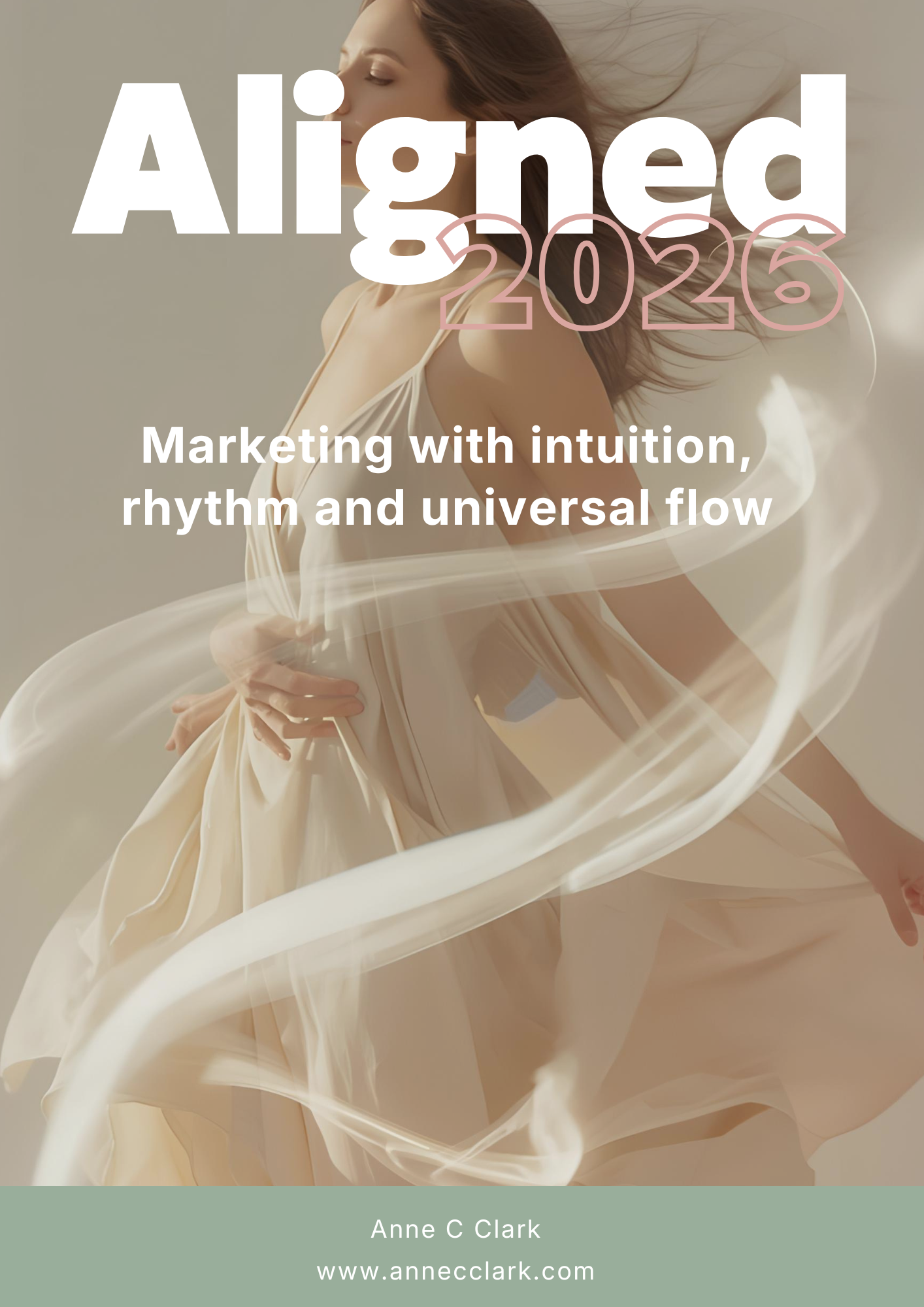
by Anne Clark | Jun 2, 2024 | Business, Canva, Creative
Canva is a powerful, user-friendly design tool that has revolutionised how people create visual content. Whether you’re a small business owner, a social media manager, or just someone who loves designing, Canva can help you produce professional-looking graphics without needing advanced design skills. If you’re new to Canva, here are some of the best tips and tricks to get you started on your design journey.
1. Get Familiar with Canva’s Interface
Before diving into design, take a few minutes to explore Canva’s interface. Familiarise yourself with the toolbar on the left, where you can access templates, elements, text, and uploads. The top bar provides options for undoing actions, resizing designs, and accessing additional settings. Understanding the layout will help you navigate the platform more efficiently.
2. Start with Templates
One of Canva’s greatest strengths is its vast library of templates. For beginners, starting with a template can save time and provide inspiration. Whether you need a social media post, a presentation, or a flyer, there’s a template for almost everything. Choose a template that matches your needs and customize it to fit your brand.
3. Use the Search Function
Canva’s search function is a powerful tool for finding specific elements, photos, and templates. If you have a particular theme or style in mind, use keywords to search for relevant assets. This can save you time and help you find exactly what you need.
4. Learn to Use Layers
Understanding layers is crucial for effective design. In Canva, elements are stacked in layers, which you can rearrange to bring items forward or send them backward. Right-click on an element to adjust its layering. This feature is particularly useful when working with multiple design elements.
5. Utilise Grids and Frames
Grids and frames are excellent tools for organizing your design. Grids help you align elements neatly, ensuring your design is balanced. Frames allow you to insert images that fit perfectly within shapes. Drag and drop your photos into frames to create clean, professional-looking compositions.
6. Customise Colours and Fonts
Brand consistency is key, even for beginners. Customize your designs by using your brand’s colours and fonts. Canva allows you to save brand colours and upload custom fonts if you have a Canva Pro account. Consistent use of colours and fonts helps in creating a cohesive brand identity.
7. Experiment with Transparency
Adding transparency to elements can create a stylish, layered look. Select the element you want to adjust and use the transparency slider in the top-right corner to make it more see-through. This is especially useful for backgrounds or overlays.
8. Group Elements for Easier Editing
When working with multiple elements, grouping them can simplify the editing process. Select the elements you want to group, right-click, and choose “Group.” This way, you can move and resize them together without disrupting the layout.
9. Take Advantage of Canva’s Design School
Canva offers a wealth of educational resources through its Design School. From beginner tutorials to advanced design tips, you can find video lessons and articles to enhance your design skills. Spending some time in Design School can pay off significantly in improving your designs.
10. Save Your Work in Folders
As you create more designs, keeping them organized becomes important. Canva allows you to save your designs in folders. Use folders to categorise your work, making it easier to find and manage your projects later.
11. Use Keyboard Shortcuts
Keyboard shortcuts can speed up your design process. Here are a few useful ones:
- Ctrl/Cmd + D: Duplicate an element
- Ctrl/Cmd + Z: Undo
- Ctrl/Cmd + Shift + Z: Redo
- Ctrl/Cmd + A: Select all elements
- Ctrl/Cmd + G: Group selected elements
- Ctrl/Cmd + Shift + G: Ungroup selected elements
12. Export in the Right Format
When your design is ready, export it in the appropriate format. Canva offers various export options, including PNG, JPG, PDF, and more. For web use, PNG is often the best choice for its quality. For print, use PDF to maintain resolution and clarity.
With these tips and tricks, you’re well on your way to becoming a Canva pro. Remember, practice makes perfect, so keep experimenting with different features and styles. Canva’s intuitive interface and vast resources make it an excellent tool for beginners looking to create stunning designs. Happy designing!

by Anne Clark | May 24, 2024 | Business, Business Services, Online Business Manager
Running a business can feel like trying to juggle flaming torches while riding a unicycle—exciting but stressful! Enter the Online Business Manager (OBM): your business’s secret weapon for turning chaos into calm and getting things done with precision and flair. But what exactly does an OBM do? Let’s break down their duties in a way that’s both professional and fun, just like the OBMs themselves!
1. Project Manager Extraordinaire
Every great idea needs a solid plan, and OBMs are masters of making plans happen.
From product launches to marketing campaigns, they map out the who, what, where, and when to keep projects moving.
Their Mission:
- Create detailed project plans.
- Assign tasks to the right team members.
- Ensure deadlines are met without anyone losing their cool.
Fun Fact: OBMs are like air traffic controllers for your business—coordinating everything so no project crashes!
2. Team Captain
Managing a team, especially a remote one, can feel like herding cats. OBMs excel at bringing people together to work like a well-oiled machine.
Their Mission:
- Hire the right talent and onboard them seamlessly.
- Ensure every team member knows their role.
- Resolve conflicts and keep morale high.
Fun Fact: OBMs have a knack for understanding team dynamics. They know who’s the brainstormer, the implementer, and the coffee enthusiast.
3. Systems Whisperer
Let’s talk systems—those behind-the-scenes heroes that keep a business running. OBMs build and optimise systems to streamline operations and save you time.
Their Mission:
- Automate repetitive tasks.
- Set up tools like CRM systems, email marketing platforms, and project management software.
- Simplify workflows so everything clicks like clockwork.
Fun Fact: OBMs are the Marie Kondos of business systems—they tidy up the mess and spark serious joy!
4. Operations Overlord
Day-to-day operations can get messy, but not on an OBM’s watch. They oversee everything to ensure the business runs smoothly and efficiently.
Their Mission:
- Monitor daily activities.
- Identify and fix operational bottlenecks.
- Keep an eye on quality control and ensure customer satisfaction.
Fun Fact: If something isn’t working, an OBM won’t just slap a band-aid on it—they’ll re-engineer the process to make it bulletproof.
5. Keeper of the Metrics
Numbers tell the story of your business, and OBMs are like your personal data detectives.
Their Mission:
- Track key performance indicators (KPIs).
- Analyse trends and provide actionable insights.
- Help you make data-driven decisions that actually work.
Fun Fact: OBMs don’t just see numbers—they see opportunities. It’s like turning a Sudoku puzzle into a success plan.
6. Strategic Wingperson
Big dreams need big strategies, and OBMs are the ultimate co-pilots for planning your business’s future.
Their Mission:
- Align daily operations with your big-picture goals.
- Help prioritise what matters most.
- Offer advice on scaling, launching, and optimising your business.
Fun Fact: Think of your OBM as the Robin to your Batman—except they also handle the Batcave’s operations!
Why You Need an OBM in Your Corner
An OBM isn’t just a task manager—they’re a partner in your business’s success. They free you up to focus on your genius zone, whether that’s creating, selling, or dreaming up your next big idea. Plus, they do it all with a blend of professionalism, efficiency, and just enough fun to keep the business vibes positive.
So, what’s next?
If your business feels like it’s spinning out of control or you’re ready to scale but don’t know where to start, an OBM could be your game-changer. They’re the ones who bring structure to chaos, strategy to operations, and smiles to your team.
Ready to pass the torch (safely) to an OBM? It might just be the best decision you make for your business!

by Anne Clark | May 20, 2024 | Business
The Importance of Systems in Running a Successful Business
Systems are the backbone of any successful enterprise, providing structure, efficiency, and consistency. Here’s why they are essential for your business success:
- Efficiency and Productivity
Well-designed systems streamline processes, reducing the time and effort required to complete tasks. By automating repetitive tasks and establishing clear procedures, your team can focus on high-impact activities that drive growth. Efficiency leads to higher productivity, allowing your business to achieve more in less time.
- Consistency and Quality Control
Systems ensure that every aspect of your business operates consistently. Whether it’s customer service, product delivery, or marketing, having standardised procedures guarantees that your customers receive the same high-quality experience every time. This consistency builds trust and loyalty, key ingredients for long-term success.
- Scalability
As your business grows, systems become even more critical. They provide a scalable framework that can handle increased workloads without sacrificing performance. With robust systems in place, you can expand your operations, enter new markets, and manage more customers seamlessly.
- Reduced Errors and Risk Management
Systems help to minimise human error by providing clear guidelines and automated checks. This reduction in errors leads to higher quality outputs and fewer costly mistakes. Additionally, having risk management systems helps identify potential threats and implement strategies to mitigate them, ensuring your business is resilient in the face of challenges.
- Employee Training and Development
Onboarding new employees can be time-consuming, but with systems in place, you can streamline this process. Standard operating procedures (SOPs) and documented workflows make it easier to train new hires, ensuring they quickly become productive members of your team. Moreover, systems can support continuous learning and development, helping your employees grow alongside your business.
- Data-Driven Decision Making
Effective systems often include data collection and analysis components. This data provides valuable insights into your business operations, customer behaviour, and market trends. By leveraging this information, you can make informed decisions that enhance your strategic planning and boost your competitive edge.
- Customer Satisfaction
Customers appreciate consistency and reliability. Systems ensure that your business delivers on its promises, meeting customer expectations time and again. From prompt responses to seamless transactions, a well-systematised business fosters positive customer experiences, leading to higher satisfaction and retention rates.
- Flexibility and Adaptability
Contrary to what some might think, systems don’t make your business rigid. Instead, they provide a stable foundation that allows for flexibility and adaptability. When your core processes are systematised, you can more easily implement changes and innovations, keeping your business agile and responsive to market demands.
By investing time and resources into developing strong systems, you pave the way for sustainable growth and long-term success. Remember, a business without systems is like a ship without a compass – it may move, but it won’t navigate towards success with purpose and precision. Start building your systems today, and watch your business flourish.

by Anne Clark | May 7, 2024 | Business, Spirituality
Overcoming Common Challenges in Spiritual Entrepreneurship: Solutions to Typical Obstacles
Embarking on the path of spiritual entrepreneurship is a deeply fulfilling journey, but it’s not without its challenges. Balancing the realms of business and spirituality requires a unique approach that honours both your spiritual calling and the practical needs of running a successful venture. Here, we explore some common obstacles faced by spiritual entrepreneurs and offer solutions to overcome them with grace and intuition.
1. Finding Your Authentic Voice
Challenge: In a world saturated with voices, finding and expressing your unique, authentic voice can be daunting.
Solution: Spend time in self-reflection to understand your core values and what sets you apart. Meditation, journaling, and connecting with your inner self can help uncover your true voice. Embrace authenticity in all your communications, whether through social media, blog posts, or client interactions. Remember, your uniqueness is your greatest asset.
2. Balancing Spirituality and Business
Challenge: Maintaining a balance between spiritual practices and business demands can be challenging.
Solution: Integrate your spiritual practices into your daily routine and business operations. Begin your day with a grounding ritual, such as meditation or yoga, to set a positive tone. Schedule regular breaks for mindfulness and reflection. Create a sacred space in your workspace to remind you of your spiritual goals. This balance ensures that your business growth is aligned with your spiritual path.
3. Managing Financial Concerns
Challenge: Navigating the financial aspects of a spiritual business can be overwhelming, especially if money feels at odds with your spiritual values.
Solution: Shift your mindset to view financial abundance as a natural part of your spiritual journey. Understand that financial prosperity enables you to serve more people and make a greater impact. Seek out financial education and support tailored to spiritual entrepreneurs. Create a sustainable pricing model that values your time and expertise while remaining accessible to your audience.
4. Building a Supportive Community
Challenge: Feeling isolated or lacking a supportive network is a common issue for spiritual entrepreneurs.
Solution: Actively seek out like-minded individuals and communities. Attend spiritual and business workshops, join online forums, and participate in networking events. Building a supportive network provides encouragement, collaboration opportunities, and a sense of belonging. Don’t hesitate to reach out for mentorship and guidance from those who have walked a similar path.
5. Overcoming Self-Doubt
Challenge: Self-doubt and imposter syndrome can hinder your progress and confidence.
Solution: Practice self-compassion and acknowledge your achievements, no matter how small. Surround yourself with positive affirmations and visual reminders of your successes. Regularly check in with your inner guidance through meditation or journaling to reaffirm your purpose and strengths. Remember, self-doubt is a common experience, but it doesn’t define your worth or capabilities.
6. Navigating Technology and Marketing
Challenge: Keeping up with technological advancements and marketing trends can be overwhelming.
Solution: Approach technology and marketing with curiosity and openness. Invest time in learning the basics of digital tools and platforms that resonate with your brand. Consider collaborating with or hiring experts who share your spiritual values to handle technical aspects, allowing you to focus on your core mission. Authentic marketing, sharing your story and values, will naturally attract your ideal audience.
7. Staying True to Your Vision
Challenge: It’s easy to get swayed by external pressures and trends, losing sight of your original vision.
Solution: Regularly revisit your mission and vision statements. Ensure that your business decisions align with your core values and long-term goals. Practice discernment in choosing opportunities and collaborations, staying true to your spiritual path. Trust that your authentic vision will guide you to the right opportunities and success.
Overcoming the challenges of spiritual entrepreneurship requires a blend of practical strategies and intuitive guidance. By staying connected to your spiritual practices, embracing authenticity, and building a supportive community, you can navigate these obstacles with grace and resilience. Remember, every challenge is an opportunity for growth and deeper alignment with your purpose. Trust in your journey and the unique light you bring to the world.
Ready to Elevate Your Spiritual Business?
If you’re ready to overcome these challenges and take your spiritual entrepreneurship to the next level, book a strategy session with me today. Together, we can align your business with your highest vision and create a path to sustainable success. Let’s harness your spiritual intuition and make your business thrive!

by Anne Clark | Apr 30, 2024 | Business, Customer Journey
The smallest details can make the biggest difference in crafting a memorable customer journey. Here are ten simple yet effective ways to elevate the experience and turn casual browsers into loyal customers.
1. Personalised Greetings
Imagine logging onto a website and being greeted by name! Simple personalised touches, such as addressing customers by name in emails or when they log into your site, can make them feel valued and enhance their connection to your brand.
2. Responsive Customer Service
Quick and empathetic responses to customer enquiries or complaints can transform a potentially negative experience into a positive one. Leveraging AI chatbots for immediate replies and routing complex queries to human agents can ensure customers feel heard and supported.
3. User-Friendly Website Design
A clean, intuitive website design is crucial. Ensure that your navigation is straightforward and that key information is easy to find. Optimise for mobile use, as a significant portion of users access the internet via their smartphones.
4. Reward Loyalty
Introduce a loyalty programme that rewards repeat customers with discounts, special offers, or early access to new products. This not only encourages repeat business but also fosters a deeper brand connection.
5. Surprise and Delight
Occasionally, surprising customers with a small freebie or an unexpected upgrade can leave a lasting impression. This could be as simple as a complimentary product sample with their order or a random upgrade to expedited shipping.
6. Consistent Communication
Keep your customers in the loop with regular updates about their orders, changes to services, or upcoming promotions. Transparency builds trust, and keeping customers informed shows that you value their business.
7. Simplify the Checkout Process
A complicated checkout process can deter potential sales. Streamline the process to minimise the number of steps and reduce cart abandonment. Offer multiple payment options to cater to different preferences.
8. Solicit Feedback
Regularly ask for feedback through surveys or follow-up emails after a purchase. This not only provides you with valuable insights into how to improve but also shows customers that you are committed to meeting their needs.
9. Educational Content
Provide value beyond the sale with educational content related to your products or industry. This could be in the form of blogs, tutorials, or user guides. Educated customers are more likely to appreciate the value of your offerings.
10. Community Engagement
Create a community around your brand by encouraging customers to interact with you and each other on social media or forums. Host live events or webinars where customers can learn and share experiences.
By focusing on these small yet impactful details, businesses can significantly enhance the customer journey, turning casual interactions into lasting relationships. Remember, in the realm of customer experience, it’s often the little things that count the most!

by Anne Clark | Apr 27, 2024 | Business, Business Services, Kajabi
Getting Started with Kajabi: A Step-by-Step Guide for Beginners
Kajabi is a comprehensive platform that enables entrepreneurs, educators, and creatives to build and manage their online businesses. Whether you’re planning to launch an online course, a membership site, or to market digital products, Kajabi provides all the tools you need in one place. Allow me to walk you through the basics of setting up your Kajabi account and getting your first product or course live!
Step 1: Sign Up and Set Up Your Account
Create an Account
Start by visiting the Kajabi website and signing up for an account. Kajabi offers a free trial, allowing you to explore its features before making any financial commitment. Fill in your details and select the plan that best fits your needs.
Navigate the Dashboard
Once your account is active, take some time to familiarise yourself with the dashboard. This is your control centre where you can access all of Kajabi’s features, such as creating products, setting up marketing campaigns, and analysing performance metrics.
Step 2: Define Your Product
Select a Product Type
Kajabi allows you to create various types of digital products including online courses, coaching programmes, and membership sites. Decide what you want to offer based on your expertise and market demand.
Create Your Product
– Go to the “Products” tab on the dashboard.
– Click on “New Product” and choose the product type.
– Follow the on-screen instructions to name your product and fill in the necessary details.
Step 3: Upload Content
Organise Your Modules and Lessons
Structure your product by creating modules and lessons. This helps in organising the content logically and enhances the learning experience.
Upload Content
– For each lesson, you can upload videos, text, images, and files.
– Use the built-in WYSIWYG editor to format text and embed media.
Set Learning Paths
Decide if learners must complete lessons in sequence or can skip around. This is crucial for structuring courses and ensuring a comprehensive learning journey.
Step 4: Customise Your Site
Design Your Site
Use Kajabi’s website builder to create your home page, landing pages, and blog. Customise the design to match your brand’s aesthetics by choosing themes and editing layouts.
Add Pages and Navigation
Ensure that your site is easy to navigate by setting up a clear menu. Include essential pages such as “About,” “Contact,” and “FAQ.”
Step 5: Set Up Payments and Pricing
Integrate Payment Gateways
Kajabi supports integrations with major payment gateways like Stripe and PayPal. Connect your account to start accepting payments securely.
Define Pricing Models
Decide on your pricing strategy. Kajabi allows you to set up one-time payments, subscriptions, and payment plans. Choose what best suits your product and target audience.
Step 6: Launch Marketing Campaigns
Email Marketing
Utilise Kajabi’s email marketing tools to build your mailing list and engage with your audience. Create automated email sequences that nurture leads and convert them into customers.
Utilise Pipelines
Pipelines are Kajabi’s automated marketing funnels. Set up pipelines to guide potential customers through different stages, from awareness to purchase.
Step 7: Analyse and Optimise
Track Performance
Monitor how your products are performing using Kajabi’s analytics tools. Track sales, user engagement, and other key metrics.
Optimise Based on Insights
Use the insights gained from analytics to optimise your content, marketing strategies, and overall business approach.
Kajabi offers a powerful suite of tools designed to help you launch and grow your online business. By following these steps, you’ll be well on your way to creating a successful digital platform that empowers both you and your audience. Don’t forget that the key to success in Kajabi is continuous learning and adapting. If you need help setting up and launching your Kajabi, then please reach out to me to learn how I can support you.















